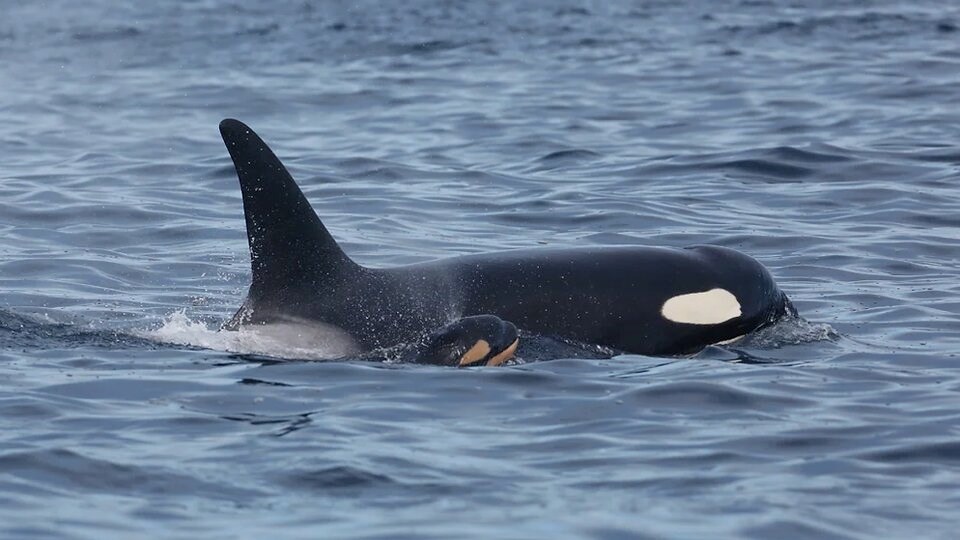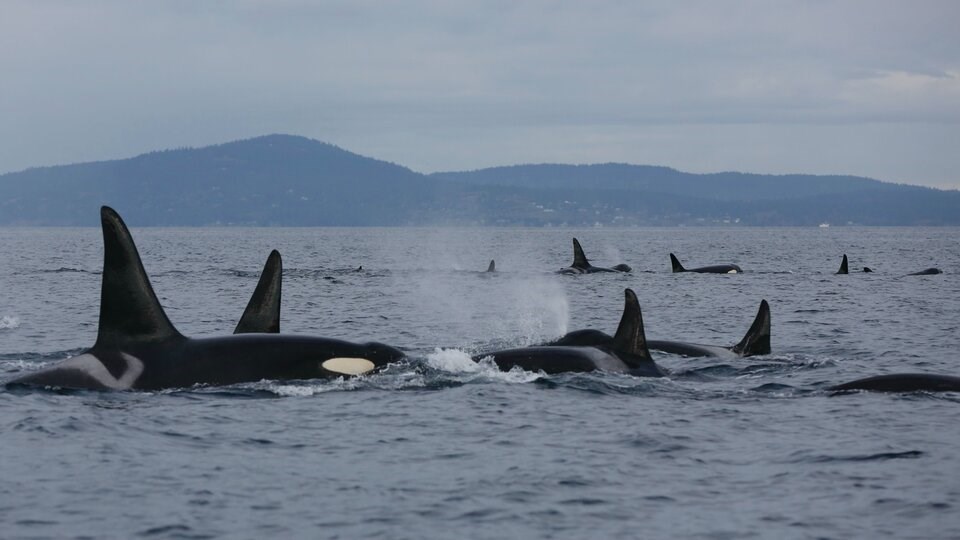Two southern resident killer whales are presumed dead after multiple sightings of two endangered pods failed to turn up a 30-year-old male and a calf.
The deaths of calf L128 and male K26, also known as Lobo, come after staff with the Washington state-based Center for Whale Research failed to record the orcas during three consecutive encounters with their families. The news reduces the southern resident population to 72 and delivers a further blow to recovery efforts.
Mark Malleson, a Victoria-based field researcher with the centre, came across L Pod’s newest calf, L128, on Oct. 5. Malleson said the calf was as it approached the boat.
“It was just lifeless,” he said. “It was just awful. I could just tell it was on its last breath.”
The next day, Malleson, who is also a whale tour guide, left Victoria again looking for the calf. He found the pod, including L128’s mother. But the pod’s youngest member was nowhere to be seen.
Latest encounter turns up nothing
A little over three weeks later, Malleson got a call from a friend saying orcas had been spotted off the southern tip of Vancouver Island.
When they arrived at the shoal known as Middle Bank on Oct. 29, they confirmed the presence of 23 members from L pod and 14 orcas from K pod.
“They were all grouped up … so we could see exactly that who’s all there,” he said.
The only two missing were K26 — already missing from two previous surveys — and L128. Since then, other teams with the centre have spotted the pods but there's been no sign of the calf.
“I knew that I wasn’t going to see it again,” said Malleson of the calf. “It’s dead.”

The field researcher said losing two members is nothing new for a pod whose population has stagnated in the six decades since live capture was banned.
“You know, everybody gets their hopes up when there’s a new calf, but the reality is they don’t make it in the first year,” Malleson said.
Andrew Trites, director of the University of British Columbia’s Marine Mammal Research Unit, said the calf’s health may have declined because of a birth defect due to inbreeding or as a result of the mother’s inexperience nursing.
“We also know with the first-born calf, the mother passes on a lot of contaminants,” Trites said.
When it comes to K26, there’s growing evidence that the southern resident population lives shorter lives compared to its northern resident neighbours, Trites said, pointing to research from some U.S. colleagues.
While female whales are desperately needed to help the population breed, the death of any animal is devastating, he said.
“Every loss is huge,” said Trites. “It makes everybody realize that extinction is around the corner.”
Search for a lifecycle bottleneck turns south
Malleson said research teams are doing drone imaging that shows southern resident mothers are getting pregnant but not often making it to full term. He said he has witnessed a number of miscarriages and stillborn calves.
He pointed to 2018, when J35 gave birth to a stillborn calf and then pushed it around for 17 days across 1,600 kilometres of ocean in what the Center for Whale Research described as a “tour of grief."
“They get pregnant. They don’t carry to term. They get pregnant again. They lose it. It’s concerning, for sure,” Malleson said. “It’s hard on these animals.”
Then there are questions over whether southern residents are getting enough food.
Trites published research last month that found chinook salmon — the whale’s preferred prey — were twice as prevalent in the hot-spots frequented by the southern populations when compared to the northern residents, even though the latter are consistently found to be healthier and more abundant.
“They do show signs of food shortages, just not here in the Salish Sea,” Trites said. “The question is where in that lifecycle are they hitting that bottleneck?”
“My feeling is it’s happening elsewhere. I’m looking at California and Oregon.”
CORRECTION: A previous version of this story misattributed a recent encounter with L pod to another matrilineal family line. We regret any confusion.




